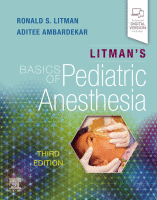Physical Address
304 North Cardinal St.
Dorchester Center, MA 02124

Trisomy 21 (Down Syndrome) With an incidence of approximately1 in 700 live births , trisomy 21 is the most common chromosomal abnormality and the most common cause of intellectual disability associated with genetic disease. These children are characterized by their…

Common Oncologic Disorders Leukemia The leukemias, which result from malignant transformation of early hematopoietic stem cells, are some of the most common malignancies of childhood ( Table 8.1 ). Acute lymphoblastic leukemia (ALL) accounts for 75% of all childhood acute…

Inherited Coagulation Disorders Hemophilia The hemophilias are a group of X-linked recessive bleeding disorders characterized by insufficient production of coagulation factor VIII (hemophilia A) or factor IX (hemophilia B). Formation of the platelet plug (primary hemostasis) is normal; however, stabilization…

Gastroesophageal Reflux Gastroesophageal reflux (GER) is a term used to describe a leaky lower esophageal sphincter that causes a child to regurgitate recently ingested meals. It is common in the first year of life, especially in children born premature, and…

Cerebral palsy and seizure disorders are very common in the pediatric population, thus anesthesia providers should be familiar with their clinical characteristics and the pharmacologic agents used for their treatment. Although less common, myopathies are associated with significant morbidity in…

Upper Respiratory Infection Upper respiratory infection (URI) is common in children presenting for anesthesia and the most common infection overall in children. The average child will have 6 to 8 URIs per year. Thus, it is important to understand the…

The overall incidence of congenital heart disease (CHD) is approximately 8 per 1000 live births and is usually divided into two categories: cyanotic (the defect contains a right-to-left shunt) and acyanotic (the defect may contain a left-to-right shunt). The most…

Developmental physiology describes the bodily changes that take place during early development. Anesthesiologists must be familiar with these changes as they pertain to the different organ systems. Developmental pharmacology describes the changes in pharmacokinetics and pharmacodynamics during early life. In…

We begin this journey into the magical world of pediatric anesthesia by describing fetal cardiopulmonary physiology and the physiologic changes that occur during birth. Knowledge of these changes is important for understanding the pathophysiologic conditions that occur in neonates when…